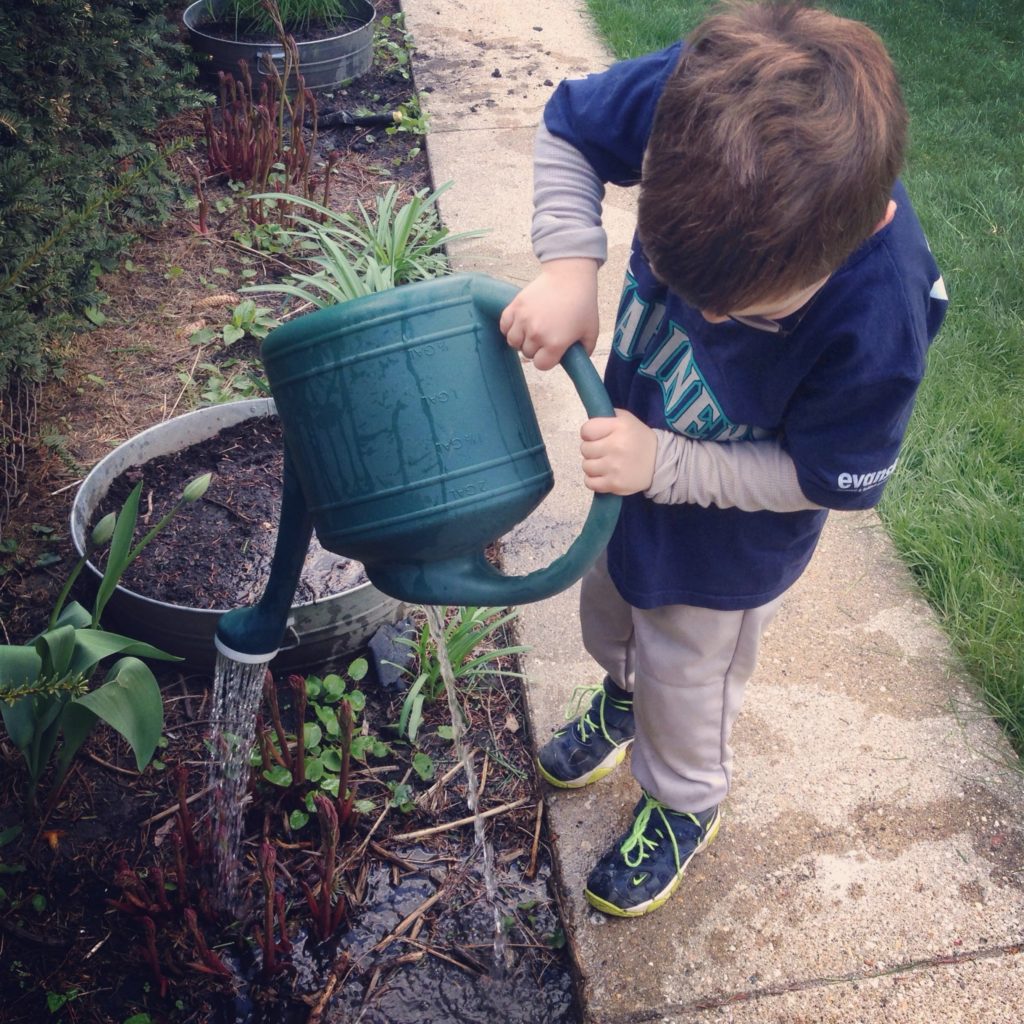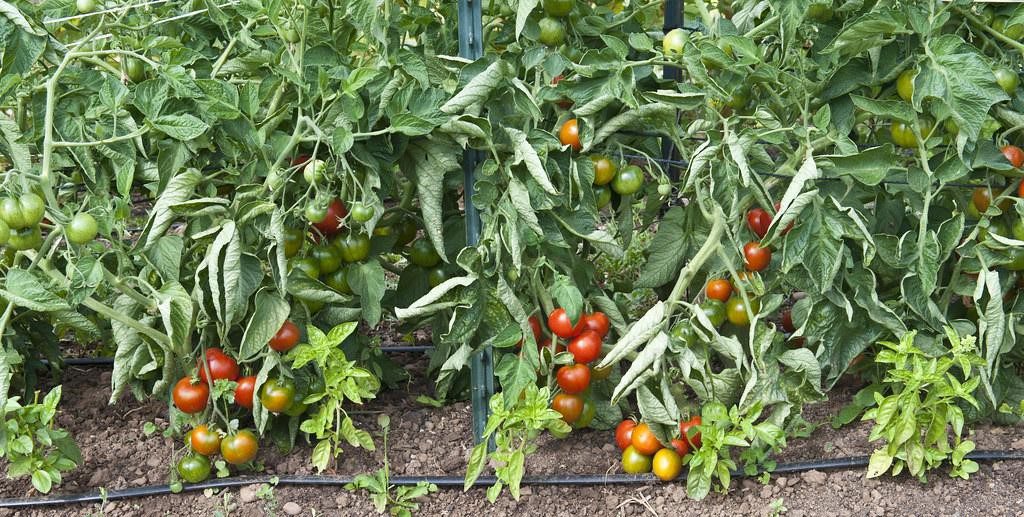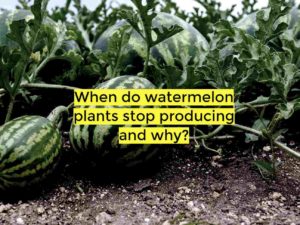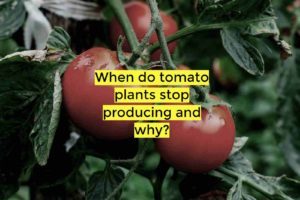You’ve probably wondered how often should you water tomato plants like me. You might have seen or read somewhere that too much irrigation can cause fruit cracking and leaves yellowing. In the same breath, a lack of irrigation leads to stress and poor harvest.
Although irrigation is good for tomatoes, how you do it will make or break your tomato plants. Naturally, your next question will be ‘then how often should you water tomato plants?’
There is a quick answer to the question ‘how often should you water tomato plants?’ It all depends on the growth stage of the tomatoes, weather, type of soil, and whether the plant is in a pot or a garden. Younger tomatoes need less water than older ones.
Soils that retain water such as loam soil, need less water than sandy soils which drain easily. With new transplants, two inches of water every morning is enough. As the crops grow, or the temperature rises, you might increase it to two inches of water twice a day.
You might like: How much water do kale plants need?
Should you water your tomato plants every night or every morning?

Early morning is best…
Tomato plants are most active during the day which is when they use most of the water. They produce food to grow strong and produce big and juicy fruits. So should you water your tomato plants every night?
The best time to water your tomato plants is in the morning. Water will be available for the plant through the heat of the afternoon. Also, watering in the morning reduces the risk of diseases attacking the plants.
Diseases are opportunists. They take advantage of small mistakes to destroy your crops. When you water tomato plants, some water lands on the leaves.
During the day, these droplets dry quickly unlike at the night. The moist leaves become soft and can easily be penetrated by diseases. Because the leaves dry quickly, the environment no longer favors the germination growth of fungus or bacteria.
Read more about tomato diseases like Tomato Catfacing: How It Looks, Causes, And How To Fix It
Rather than late in the evening
Late evening watering advocates might argue that irrigating in the evening reduces the loss of water by evaporation. Evaporation is higher during the day than in the evening because of the sun.
When the sun heats the soil, the moisture inside it evaporates. As a result, tomato plants lack access to adequate moisture. I tend to agree with them.
However, if you were to weigh the benefits of watering early in the morning versus the evening, morning comes out on top.
Watering tomatoes very early in the morning increases the water plants absorb before the sun is high and evaporation sets in.
Early morning irrigation ensures plants get a full day’s worth of water for actively growing leaves, flowers, and fruit production. It is settled. Morning is the best time for watering.
Do tomatoes like lots of water?

Tomatoes like it when you give them enough water. They need about 2 inches of water daily to maintain the moisture in the soil up to a depth of 6 inches. 6 inches of moisture and no flooding is enough for healthy growth.
It feels like drowning
Too much water feels like drowning plants. When the soil is flooded, it makes it hard for the roots to absorb nutrients from the soil because water dilutes the nutrients in the soil.
Because plants are unable to get nutrients from the soil, they will start showing symptoms of deficiency diseases. Tomato leaves might start turning yellow starting from the lower leaves or purple.
As the tomato plant matures and begins producing fruits, too much water causes the fruit to swell up too fast and burst or crack the skin. Tomato fruit cracking is the reason why you should reduce the watering during the later stages of fruit formation.
Reducing watering frequency also increases sugar concentration in the fruit making the fruit sweet. Tomatoes matured in lots of water tend to be tasteless.
How long can tomato plants go without water?

You’ve seen the concerns and why you should be alert. If you’re still reading this, you might have wondered what is the worst thing that could happen if it went the other. Let’s say you forgot to water the garden, how long can the tomato plants go without water?
Short periods of water shortage
Tomatoes are tough crops. They will find a way to adapt but only for a couple of days.36 hours without water is can stress the plant. Tomato plants need moisture up to 6 inches deep from the surface.
Adequate water in the soil encourages the roots to grow deep and spread wide. Deep and wide roots can access more nutrients in the soil and provide firm support for the crops.
Long periods of water shortage
After long periods with no water, they slowly dry up and die. Lack of sufficient water is stressful for the plant. The damage by lack of water is different depending on the stage where tomato plans experience a lack of water.
In the early stages of growth, lack of water will cause a condition of stunted growth where tomatoes don’t grow tall. As the plant starts to flower, water stress leads to flowers dropping or getting aborted (blossom drop). When the tomato plant matures, water stress leads to immature or small but mature fruits.
Installing automatic drip irrigation systems for the plants will save you the stress of having to remember to water all the time. You are free to take that short trip or go out with your friends knowing your crops won’t get water stress when you are away.
Conclusion
Just to recap. The answer to how often should you water tomato plants is every day. Each time add about 2 inches of water to the soil. This can increase as the plant grows.
The best time of the day to water the tomato plant is in the morning. It provides water needed for active growth when the sun shines. It also reduces the risk of disease. With enough moisture and watering, tomato plants grow healthy to resist disease and mature to produce big juicy fruits.





[…] Continue reading: How Often Should I Water My Raised Vegetable Garden? Don’ts and Dos […]
[…] How Often Should I Water A Raised Vegetable Garden? […]
[…] How often should you water tomato plants? […]
[…] Read more: How often should you water tomato plants. […]
[…] How Often Should I Water A Raised Vegetable Garden? Dos and Don’ts. […]
[…] How often should you water tomato plants? […]
[…] How Often Should I Water A Raised Vegetable Garden? Dos and Don’ts. […]